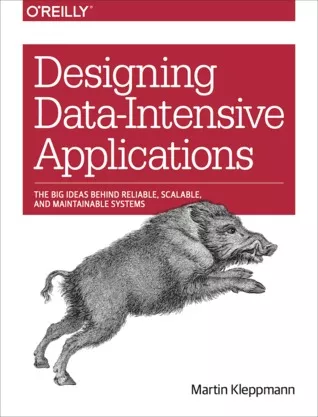Source: Chat-Gpt
Martin Kleppmann's Designing Data-Intensive Applications is an in-depth guide that explores the architecture, design, and scalability of modern data-intensive systems. The book covers the fundamental concepts, trade-offs, and best practices for designing robust, scalable, and maintainable systems that process large amounts of data.
Key Themes and Topics:
- Reliability, Scalability, and Maintainability:
- These three pillars form the basis for designing data-intensive applications.
- Reliability ensures the system works correctly even in adverse conditions.
- Scalability handles increasing loads, often through distributed systems.
- Maintainability ensures systems can evolve over time with minimal disruption.
- Data Models and Query Languages:
- The book delves into different data models, including relational (SQL), document (NoSQL), key-value, graph-based, and column-oriented databases.
- Kleppmann highlights the trade-offs in choosing the right data model and query language based on application needs.
- Storage and Retrieval:
- Discusses various storage engines, such as log-structured merge trees (LSM), B-trees, and SSTables.
- Explains indexing, caching, and other mechanisms to improve data access efficiency.
- The emphasis is on durability and consistency in data storage, whether in-memory or on disk.
- Distributed Data:
- Provides insights into handling distributed systems, including the challenges of consistency, consensus, replication, and partitioning.
- The book introduces distributed consensus algorithms, such as Paxos and Raft, as well as concepts like the CAP theorem (Consistency, Availability, Partition Tolerance) and the trade-offs between them.
- Discusses various forms of replication (e.g., leader-follower replication) and partitioning strategies.
- Consistency, Transactions, and Isolation:
- The book delves deeply into consistency models (e.g., eventual consistency, strong consistency) and the trade-offs between them.
- Kleppmann explains the importance of ACID (Atomicity, Consistency, Isolation, Durability) transactions in traditional databases and contrasts them with BASE (Basically Available, Soft state, Eventual consistency) in distributed systems.
- Distributed Systems Design:
- Describes various techniques to make distributed systems fault-tolerant, such as replication, leader election, and recovery from failures.
- Covers the importance of consensus algorithms (like Raft and Paxos) in ensuring consistent state across distributed systems.
- Batch and Stream Processing:
- Compares batch processing (e.g., Hadoop, Spark) and stream processing (e.g., Kafka, Storm) frameworks.
- Discusses the trade-offs between latency and throughput and how to choose the right architecture for real-time or near-real-time data processing.
- Dataflow and Message-Driven Architectures:
- Focuses on how data flows through systems in event-driven architectures using message queues and logs (e.g., Kafka).
- Explains how systems can be designed to be resilient to failure while maintaining performance through asynchrony and eventual consistency.
- Security and Privacy:
- Highlights best practices for securing data, ensuring encryption both at rest and in transit, and maintaining privacy standards, including compliance with regulations like GDPR.
Conclusion:
Designing Data-Intensive Applications is a practical, in-depth resource for software engineers, architects, and systems designers involved in building scalable, fault-tolerant data systems. It emphasizes understanding trade-offs and practical approaches to building reliable systems that handle vast amounts of data in distributed environments.
The book's careful breakdown of complex topics—distributed systems, data modeling, replication, and processing paradigms—makes it essential reading for professionals dealing with large-scale data challenges in modern applications.

